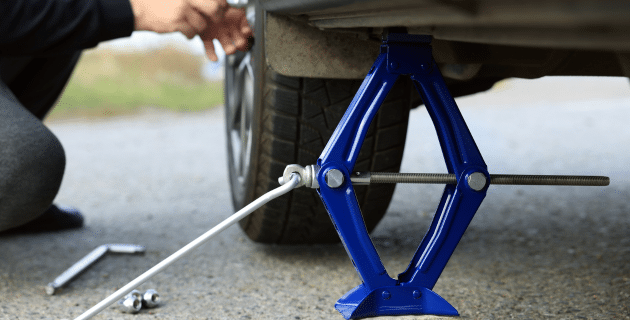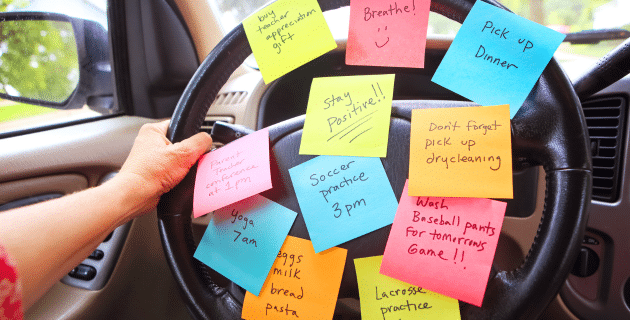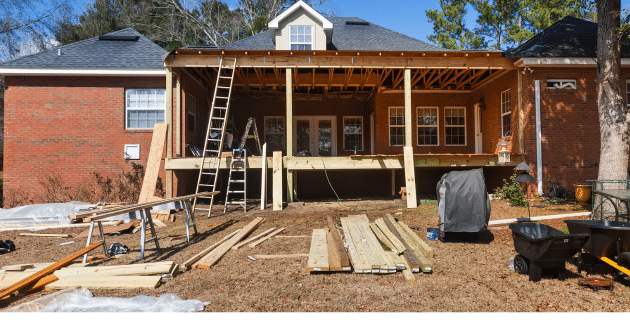
by California Casualty | Auto Insurance Info, Safety, Travel |
Some days it seems we’re practically living in our cars. Having the right things on hand can make our lives that much easier.
As you’re going from soccer practice to dance and back again, make sure you have the kid-friendly “must-haves” in your vehicle. In honor of Child Passenger Safety Week, we’ve also included some important items to keep everyone safe.
Essentials
Stock the basic travel items to keep everyone clean and comfortable.
- Wipes: These include wet wipes to clean hands and faces as well as disinfecting wipes for surfaces such as car seats. Up your game with stain remover wipes for those “oops” moments.
- Tissues: Travel packs are easy to store. Not only are they good for the sniffles, but they can also double as napkins after eating, or toilet paper if you’re in a bathroom that has run out.
- A towel: Dry off, clean off, or use to cover a hot seat. Towels can even double as a blanket or a napkin in a pinch.
- Scissors: These are helpful in case you need to cut a seatbelt in an emergency. In non-emergency situations, use them to cut open items that won’t easily tear.
Pro Tip: Use a laundry basket for the things going from the car into the house and back again. It’s especially useful for sports equipment.
Clothing
Keep some extra things for everyone in your family.
- Ponchos and/or umbrellas: You’ll want these for when you’re caught in the rain. You can find inexpensive disposable ponchos that do the trick.
- Extra pair of clothes: Include a change of clothes with underwear, and a plastic bag for dirty or wet things.
- Flip flops: It’s easier storing these than shoes for those times when your child splashes in muddy puddles. They’re more forgiving in size and you buy them on clearance.
- Coats, sweatshirts, and blankets: These are great when the air conditioning is blasting, or the weather turns colder unexpectedly.
Snacks and Water
Sometimes plans change, or things take longer than you expected. This way, you’ll avoid the question, “can we stop somewhere for dinner?”
- Snacks: Stock child-friendly snacks and update even nonperishable ones regularly.
- Self-serve containers: Invest in spill-proof cups and containers that enable toddlers and young children to serve themselves.
- Water: Choose reusable bottles, filled with fresh water to keep everyone hydrated. Water is also helpful when someone has sticky hands or sandy/dirty feet.
- Trash bag: You want a place where the kids can throw their trash. Disposable plastic or paper bags are good options. Make sure to empty them often.
Entertainment
Keep them occupied with their favorite activities so that you can stay focused on the road.
- Shoe box of toys: Let them decorate a shoe box and choose their favorite toys for the car. Include crayons and add some coloring books to your bag of books, below.
- Reading: Pack a bag of books for every age level. Consider audio books for longer trips.
- Power converter: Charge everything from phones to kids’ tablets to portable DVD players.
- Restaurant backpack: Stopping to eat? Fill a backpack with toys and activities for kids to use at the restaurant.
Safety
We recognize Child Passenger Safety Week each September. It’s a reminder to keep safety in mind when we’re on the road.
- LifeVac anti-choking device: Enjoying snacks in the car? This rescue suction device can save a life in a choking emergency.
- Safewise seat alarm: This device detects when you open a back door before starting the engine. It sounds a chime, then issues escalating reminders so that you won’t accidentally leave a child behind in a hot car.
- First aid kit: From band aids to antibiotic ointments, chances are you’re going to have to take care of minor injuries on the road. Make sure your first aid kit is fully stocked with the items you need. Include a first aid manual for those situations where you’re not exactly sure what to do.
- Emergency roadside kit: Make sure you’re fully prepared in case you get stuck or stranded. Flares, flashlights, and jumper cables are good things to have in your emergency car kit.
Teach your children safety in and around vehicles for added protection. Finally, protect your car with the right insurance. It will give you peace of mind as you take care of your most precious cargo—your children. Safe travels.
This article is furnished by California Casualty, providing auto and home insurance to educators, law enforcement officers, firefighters, and nurses. Get a quote at 1.866.704.8614.

by California Casualty | Auto Insurance Info, Safety, Travel |
Thump, thump, thump. The sound of a flat tire doesn’t have to ruin your day. Be prepared for a future blow-out or puncture by reviewing how to use a car jack safely. In honor of National Preparedness Month, we’ve prepared a step-by-step guide. Bookmark this or print it out for when you need it.
First, what kind of jack do you have?
There are different kinds of jacks, and they operate slightly differently. Know which one you have.
- Chances are you have a scissor jack. These are the jacks that typically come with new cars. Their compact size allows them to easily fit in a vehicle’s trunk. They look like two pairs of scissors joined at the tips, creating a diamond shape. Scissor jacks are designed to get the job done but they’re not meant for repeated use over time.
- Hydraulic floor jacks are used by car enthusiasts. They’re also known as bottle jacks. They have a metal base with a lever extending to the side. They can be used repeatedly over time. However, their bulkier size makes them harder to store.
Step-by-step Instructions
Step 1: Park the car.
- You saw the tire warning light or heard the thudding sound of a tire going flat. Safely pull over away from traffic. Don’t try to drive on a flat tire; it can cause harm to the wheel.
- Make sure you are parked on solid ground. Don’t put a jack on dirt or grass. It will not be stable enough. (If you have to park on dirt or grass, use a thick, flat piece of wood to create a stable platform for the jack.)
- Don’t use a jack on an incline. If you must, make sure you’re close to the curb. If you’re parked downhill, turn your front wheels toward the curb. If you’re parked uphill, turn your wheels away from the curb.
- Put the car in park and engage the parking brake. If your car has a manual transmission, put it in first gear and engage the parking brake. Turn the engine off and put on your hazard lights.
Step 2: Secure the wheels.
- For an added precaution, you will want to “chock” at least one wheel. A chock is a block or wedge placed against a wheel to prevent it from moving.
- You can buy an inexpensive chock block or wheel wedge from an auto or big box store. If you don’t have one, you may use wood blocks or bricks.
- If you’re lifting the front of the car, put the chock behind the back tire.
- Do the opposite of the corner that you’re going to lift. If you’re lifting the front right wheel, then chock the rear left and vice versa.
Step 3: Set up the jack.
- You will find your jack in the trunk or under the luggage floor cover.
- Jacks are not labeled with “this side up.” Make sure that it’s not upside down when you place it on the ground. For a scissor jack, look for a larger flat base at the bottom and a smaller “saddle” pad at the top.
- If you have a handle assembly, put the handle together. For scissor jacks, slip the included rod tool through the hole and turn to pull the sides of the scissor inward and the top and bottom of the jack apart. For hydraulic jacks, you will need to place the handle in the opening. To operate hydraulic jacks, simply pump the handle.
- Practice without a load. You can use silicone spray if the jack is tight or jerky.
Step 4: Place the jack.
- On most vehicles, there are 4 jacking points with reinforced metal to safely lift your car.
- Look just behind the front wheels and just in front of rear wheels or consult your owner’s manual.
- If you are lifting just one wheel, choose a jack point near that corner. Most likely, the right place is on the pinch weld (where the metal pieces are welded together) between the front and rear tires. There may be a solid square of metal underneath the car for your jack point.
- Stay away from fuel lines and fragile parts.
Step 4: Raise the car.
- Turn the handle of your scissor jack to the right (or pump your hydraulic jack). There will be some initial resistance, but the tire will eventually come off the ground.
- Make sure the jack stays straight up. If it’s leaning, it will not be able to support the car correctly.
- Pay attention to sounds. You may hear a pop or a thud if the jack shifts slightly. Check that it hasn’t slipped out of position.
- Stop when the wheel is just a few inches off the ground. You don’t need much room to change a tire.
- Check your jack. Give your car a gentle shake to make sure it’s secure. If the jack moves, then raise or lower it to the point where there’s no movement.
Step 5: Add jack stands (optional).
- Jack stands will help provide additional support. They are essential if you are working under the car but optional if you are changing a tire and not going underneath.
- Place your jack stand directly under the lifting point. Use the pin or screw to lock it in place, per the manufacturer’s instructions.
- Do not use cinder blocks or bricks as a substitute for jack stands.
Step 6: Lower the car.
- When you are done changing the tire, it is time to lower the car. Raise the car an inch or two so you can remove the jack stands.
- To lower the car, turn a scissor jack counterclockwise or to the left.
- For a hydraulic jack, open the relief valve to let the fluid drain. This will lower the arm. Make sure to open the valve slowly so you don’t drop the car down too fast.
- Put the jack away for use at another time. Congratulate yourself on a job well done.
Your car is one of your greatest investments. Keep your car well maintained and protect it with the right insurance. Safe travels.
This article is furnished by California Casualty, providing auto and home insurance to educators, law enforcement officers, firefighters, and nurses. Get a quote at 1.866.704.8614 or www.calcas.com.

by California Casualty | Educators, Firefighters, Health, Nurses, Peace Officers |
Before we know it, we’ll be going from relaxing summer days to busy fall schedules. With school, sports practices, extracurricular activities, meetings, and more, it can easily become overwhelming.
We’ve researched some effective ways to take control of our busy schedules. Follow these tips and, hopefully, you’ll find some much-needed time for yourself, too.
Stay on top of the little things so they don’t create last minute rushes.
Stop for gas before the tank is nearly empty. Do your laundry so you don’t have to search for that clean shirt. Go food shopping so you have items to pack for lunch. If you put off the small things, they can become big stressors and throw off your schedule.
Use the one-minute rule. If a task will take you one minute or less, do it now.
Hang up your coat. Put your dishes in the dishwasher. Put away all the groceries when you bring them home, even the ones that don’t need refrigeration. Putting off these smaller tasks will just add to your to-do list.
Make large tasks more manageable by doing them in stages.
If you have a big project at work, you probably break it down into smaller parts. Do the same with your household tasks. Clean the bathroom on Monday, the toilet on Tuesday, and so on. Break up larger projects so that it’s easier to fit them into your schedule.
Make sure everything in your house has a home.
You have five minutes before you must leave, and you can’t find your keys. When you declutter, it’s a lot easier to find the things you need at a moment’s notice. Do that not only for your house but for your car and workspace too.
Schedule tasks for the time that you are most productive.
Are you an early morning person or a night owl? Plan tasks for the times that you have the most energy or can focus the best. You’ll be amazed at how much you can accomplish.
Plan for downtime as you wait for pickups or in lines.
Use waiting time for answering emails, reading brief articles, or doing other tasks that take 10-15 minutes. Prepare a list of smaller tasks that you can complete during this time. Some downtime, however, such as sitting in traffic is not right for multitasking. Don’t text and drive, even if your car is not moving.
Create a to-do list with time estimates.
Don’t rely on your memory. Prepare a daily to-do list. Include an estimate of the time each task will take. Star or highlight the tasks that take priority. Then make an informed decision about which tasks you’ll tackle first. Keep your to-do list in sight where you can easily see it.
Pro Tip: Plan the next day’s to-do list at the end of the previous day so you’ll be ready to go.
Reflect and reprioritize.
New tasks pop up all the time. Take a moment midday to reflect on your to-do list. See where you are and what you have yet to do. Update your priorities to tackle the most important tasks.
Create a master calendar for a visual representation of your schedule.
While a to-do list helps with tasks, a calendar displays your daily, weekly, and monthly commitments at-a-glance. Block out activities on your calendar. Color code your calendar by work/personal/family/child. Allow for travel time and make sure to include breaks/downtime.
Set aside different days of the week for different tasks.
Maybe Saturday is for errands. Sunday is for meal prep. Organizing your schedule in this way helps consolidate the same types of tasks. That way, you’re not running to the food store three times a week for groceries. It will end up being a big timesaver.
Reduce time in meetings.
Consider whether a meeting needs to be in person, or if it could be virtual (no travel time). Maybe it could be a call or email. If you do have the meeting, share the agenda in advance. Include times for topics and stick to the schedule.
Avoid distractions from tasks at hand.
Texts and emails can interrupt your workday and family time. Put your phone on silent or wear headphones. Wait until your break to check your phone. Considering checking email at a designated time (e.g., every hour or every couple of hours) rather than all the time.
Don’t be afraid to delegate.
You don’t have to do everything. Don’t accept more responsibility than you can realistically handle. See if there is someone at work or in your family who can take over some of your workload. Consider paying a professional to handle some of your tasks. There are services that handle errands, housekeeping, meal prep, and more.
Use digital tools.
There are many technology tools that can help you organize from calendar apps to digital to-do lists. Some popular tools include ClickUp, Google Tasks, Notion, RescueTime, and Todoist.
Schedule time for yourself.
You do everything for everyone. Make sure you make time to relax and recharge. Block off time for lunch. Schedule time for self-care, including favorite hobbies, time with friends, and time away. You’ll emerge refreshed and ready to take on a new day.
This article is furnished by California Casualty, providing auto and home insurance to educators, law enforcement officers, firefighters, and nurses. Get a quote at 1.866.704.8614 or www.calcas.com.

by California Casualty | Educators |
It seems as if summer has flown by, and that means just one thing: school is almost here. How do you get everything done in the short time that you have left? Here’s an easy-to-follow checklist so you can divide and conquer with plenty of time to enjoy the last days of summer fun.
Classroom
Setting up the perfect environment for learning takes some thoughtful planning. Benefits of a well-arranged classroom include easier transitions and help with behavior management.
- Before you move a piece of furniture, sketch a layout that incorporates the spaces you want in your classroom.
- Plan for student seating, small group workspaces, learning centers, supply areas, class library, etc.
- Make sure your teacher’s desk is positioned so you have a good view of the whole classroom. Stock it with your favorite supplies.
- Ask a friend, family member or colleague to help you set up the room. (If you ask a fellow educator to help, make sure you reciprocate with his/her room.)
- Familiarize yourself with the classroom technology and equipment. Put in any repair requests.
- Put up classroom posters and bulletin boards. (Pro Tip: Leave bulletin boards blank with a sign saying, “under construction,” and plan to post student work there.)
- Decorate your front door to welcome students.
- Add student name plates to desks and cubbies if applicable.
- Post the emergency evacuation procedure.
- Set up fans for the first warmer weeks of school.
Organization
Set up the systems for classroom organization and you’ll appreciate the ease with which you can access items and key dates all year long.
- Find a place in your classroom for all your materials from art supplies and math manipulatives to textbooks, whiteboards, etc. Try these inexpensive organization hacks.
- Label your shelves and supply boxes to make it easier to find what you need.
- Set up student files/portfolios and your grading system. Review class lists, IEPs, allergies, and any other pertinent student information.
- Set up your planner/calendar with pertinent dates for the school year, and especially for the first marking period. Don’t forget to mark Back to School Night.
- Make student name tags for the first day, if desired.
- Have a plan for collecting and storing the school supplies that students will bring the first day.
Rules & Routines
Set the expectations right at the beginning, so that your students know the rules and routines. That will make class time more enjoyable and productive.
- Make a list of classroom rules. Include consequences if rules are broken. (You can prepare this even if you will do a similar exercise with student-led, class-created rules because you already know your behavioral management)
- Determine the rules for leaving the classroom, including bathroom breaks and visits to the water fountain.
- Finalize your procedures, including morning routine, dismissal routine, homework policy and systems for students to turn in work. You will be teaching these during the first weeks of school.
- Set your signal to get student attention. Choose the behavior management tools you will use.
- Determine student responsibilities and how you will rotate classroom duties among students throughout the year.
Lesson Planning
Keep students on track with clear daily goals for student learning. Remember that effective planning also includes some built-in flexibility to respond to student needs.
- Decide how you will structure each week based on specials, prep periods, etc.
- Prepare lessons for the first two weeks. Include icebreaker activities and lots of practice with routines.
- Plan a stress-free, no-skills-needed bellringer or morning work activity to use as needed.
- Make copies for the first week so you won’t have to worry about them. You’ll also avoid the long lines at the copier.
- Determine how, and whether, you will use music in your classroom.
- Consider classroom transformations that you may do this year as part of the curriculum.
- Write emergency sub plans. You never know when you might use them.
Family-School Connection
Building the connection with students’ families will provide a support system that enables the learning to continue at home.
- Prepare a student/family welcome letter or video. You may opt to mail the letter prior to the school year, hand it to students on the first day, or post it to your class page.
- Set up your classroom web page. Include an overview of school hours, class schedule, brief highlights of curriculum, dress code or uniforms (if applicable), and your contact information.
- List academic websites that students will use, such as leveled reading sites. Determine where you will post homework assignments and set up homework for the first week.
- Ask for class parents and parent volunteers in your welcome letter or on your class web page.
- Prepare a list of responsibilities for class parents. If you have a project in mind, like building a class library, you’ll be able to get them started.
Other
You’re not only in charge of a classroom of students, but you’re also responsible for yourself. Make sure you take the time you need so that you’re set up to do a great job.
- Get your professional clothes out of the closet. Determine if you need to update or replace any.
- Pick out your outfit for the first day of school.
- Go food shopping for healthy snacks and lunch items.
- Plan what you will pack for the lunch the first day and the first week.
- Remember to practice self-care as you return to the classroom.
We know from experience that there’s always something more to do. Don’t feel as if you must do it all. Take a breath and know that you’ve got this. Have a great year!
This article is furnished by California Casualty, providing auto and home insurance to educators, law enforcement officers, firefighters, and nurses. Get a quote at 1.866.704.8614 or www.calcas.com.

by California Casualty | Homeowners Insurance Info |
You’re ready to upgrade your kitchen or build that deck. Remodeling is a great way to add value to your home. If you’re planning a renovation project, there’s something you’ll want to do first. Review your homeowner’s policy. That way you can make any changes to ensure you’ll be fully covered.
There are several ways insurance can factor into home renovations, but you’ll want to check the specifics. Then you’ll know what is covered and what is not:
- If your home is damaged during remodeling
- If someone gets hurt during remodeling
- If your home is not up to code
- If the remodel increases the value of your home/property
If your home is damaged during remodeling…
You may hire a contractor for your home renovation. Make sure they carry the right insurance. This includes workers’ compensation, property damage, and personal liability. Ask to see a copy of your contractor’s insurance policies. Look for a commercial business/general liability policy and for a workers’ comp policy. Take a photo of the documents for your records. If your contractor is not insured, he or she or their staff could sue you if injured.
If someone gets hurt during remodeling…
If you are doing a DIY remodel with the help of family or friends, you’re responsible for their safety. Make sure your liability coverage is enough. Consider increasing liability limits in case someone gets injured. Personal Liability protects you if a claim is made or a suit brought against you for bodily injury or property damage and you are found to be legally liable. Liability covers you at your place or anywhere in the world. If you are found liable, the policy will pay up to its limit of liability for damages for which an insured is legally liable. This can include medical expenses, lost wages, pain and suffering, and permanent scarring. The policy also provides a defense in court, if needed, for the policyholder. This is at the insurance company’s own expense.
If your home is not up to code…
Insurance only pays if there is a covered loss, not for renovating or remodeling. However, if you are rebuilding your house due to a covered loss, and you need to bring your home up to code, insurance can help. Add an endorsement for Ordinance or Law coverage to bring your home up to current building codes for repairs and/or rebuilding. Again, this endorsement only provides coverage if there is a covered loss and you are required to bring it up to code. The contract automatically includes 10% of your coverage A but the endorsement can be added to increase that percentage.
If the remodel increases the value of your home…
Your homeowner’s insurance is designed to repair and/or replace your home should it be damaged by a covered loss. When you renovate your home, your improvements have increased its value. Don’t make the mistake of thinking your original insurance will cover it. Make sure you are fully covered for the new value of your home if you must replace or rebuild it in the future.
Your insurer may require you to notify them within 30 days of completion of any improvements, alterations or additions to the building insured under Coverage A which will increase the replacement cost of your home by 5% or more.
Dwelling Coverage
Talk to the service department at your insurer about increasing your dwelling coverage. Dwelling refers to the structure of your home and includes the roof, walls, floorboards, cabinets, and bath fixtures. The easiest way to think about it is that if you could tip your house upside down, the dwelling is everything that remains attached.
Attractive Nuisance
Does your renovation include an attractive nuisance? Attractive nuisance is a term used to describe anything that might attract children and present a potential danger to them. Examples include trampolines, swimming pools, and playground equipment. If you added any of these during your renovation, be sure that you are (a) secured against access to them with a fence and locked gate and (b) covered for them under your policy.
Personal Property Coverage
You may need to increase coverage for personal possessions if you purchased items as part of the renovation or since your last policy update. Personal property coverage protects your possessions, such as furniture, clothes, sports equipment, and other personal items. Again, if you could tip your home upside down, everything that would fall out is considered personal property. This coverage protects these items whether they are in your house or off premises.
Speak with your insurer’s service department to see if you need to change your coverage limits.
Your insurer has a built-in tool that helps them estimate the replacement cost of your home. They update the information into the system, which provides the new rebuild cost. While a renovation can increase your premium, certain improvements can help to reduce payments. These include security systems, or a new roof. Ask about discounts, too. California Casualty offers discounts to nurses, educators, and first responders.
This article is furnished by California Casualty, providing auto and home insurance to educators, law enforcement officers, firefighters, and nurses. Get a quote at 1.866.704.8614 or www.calcas.com.





